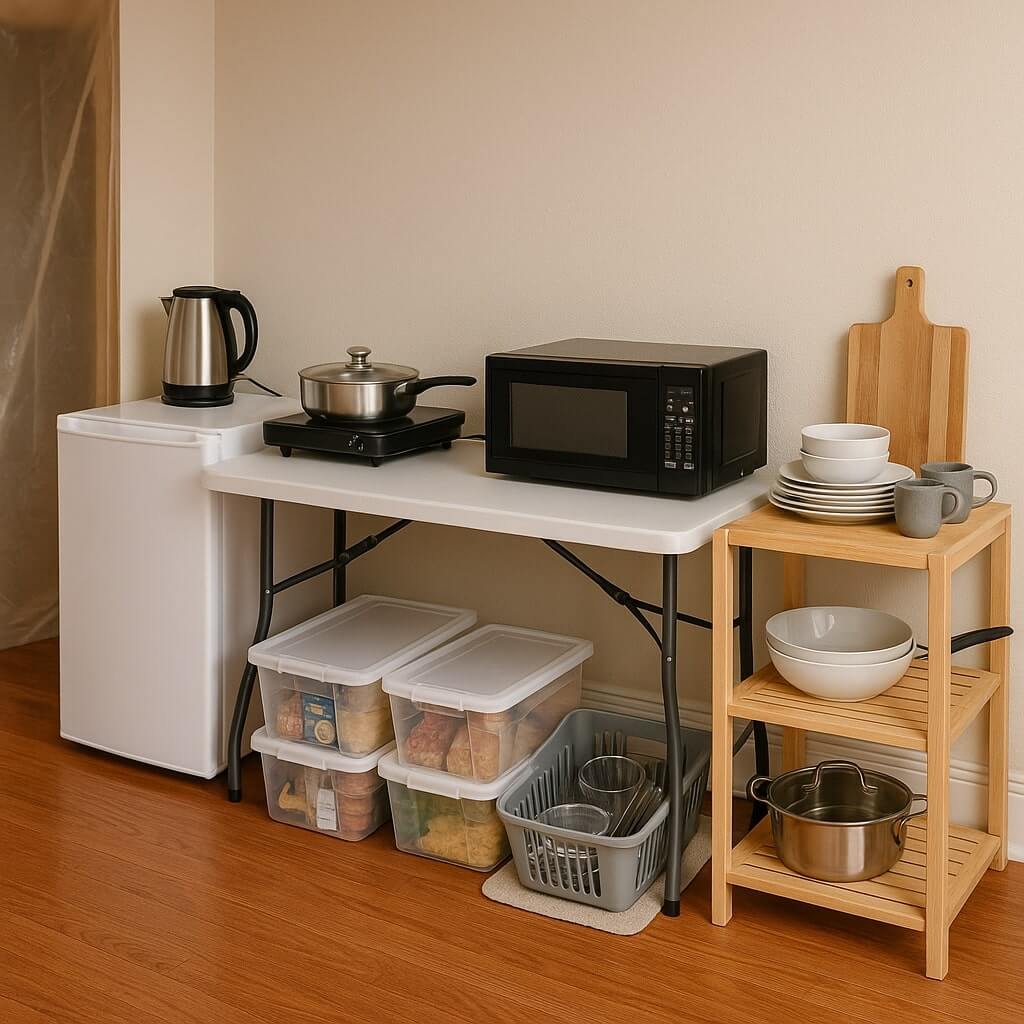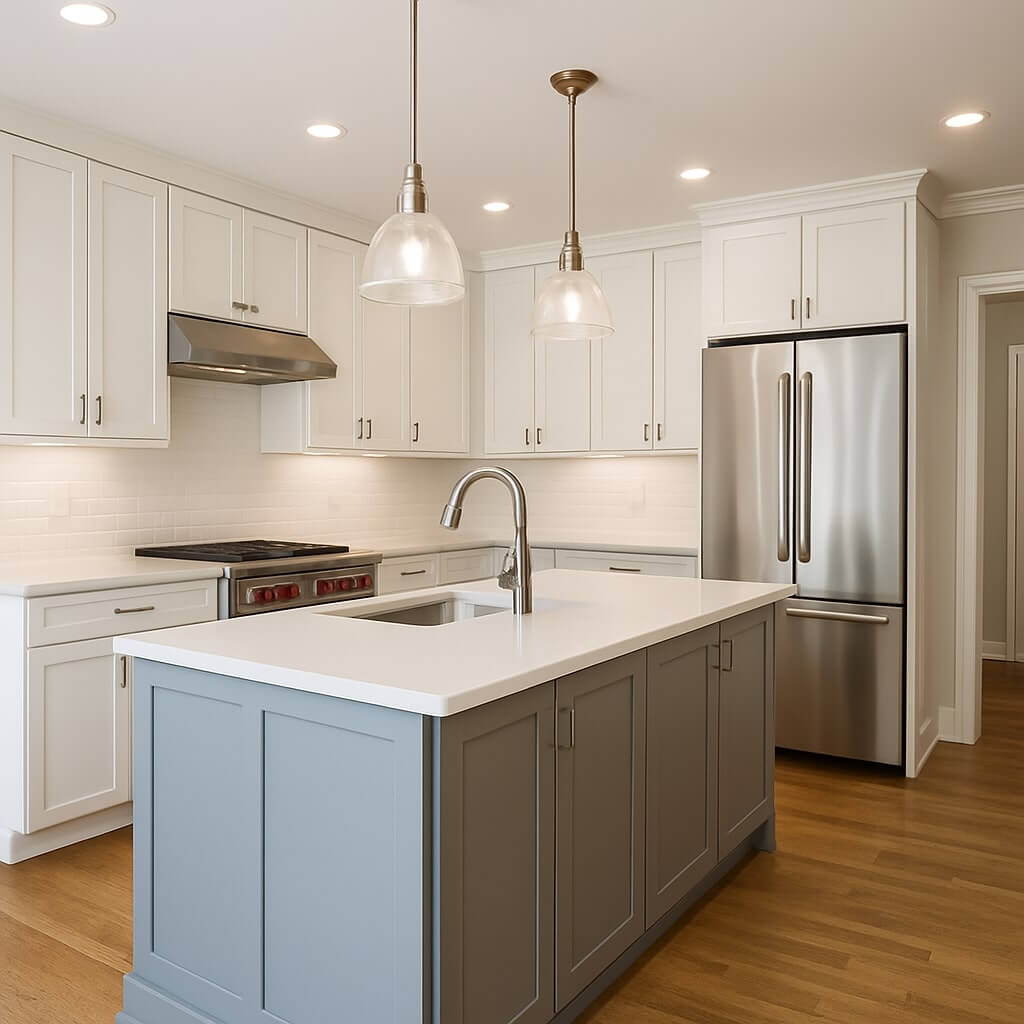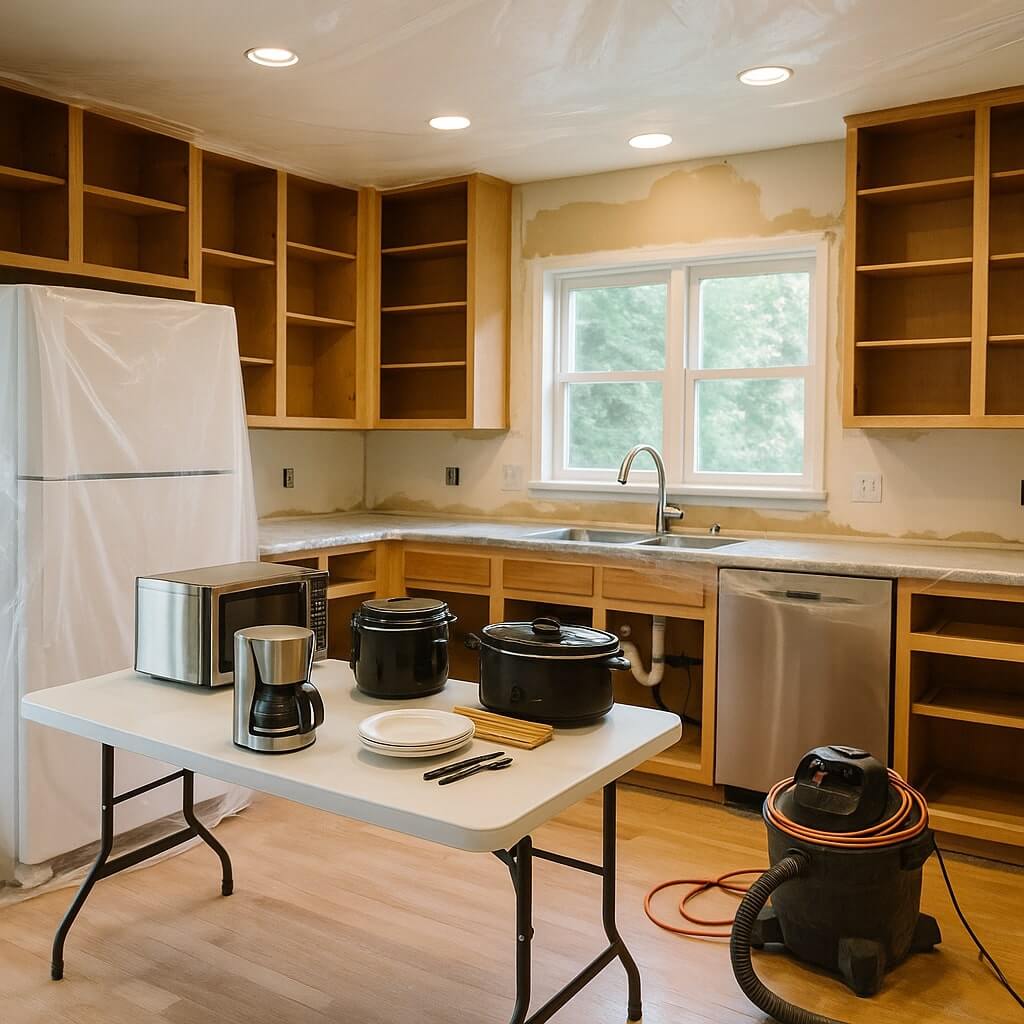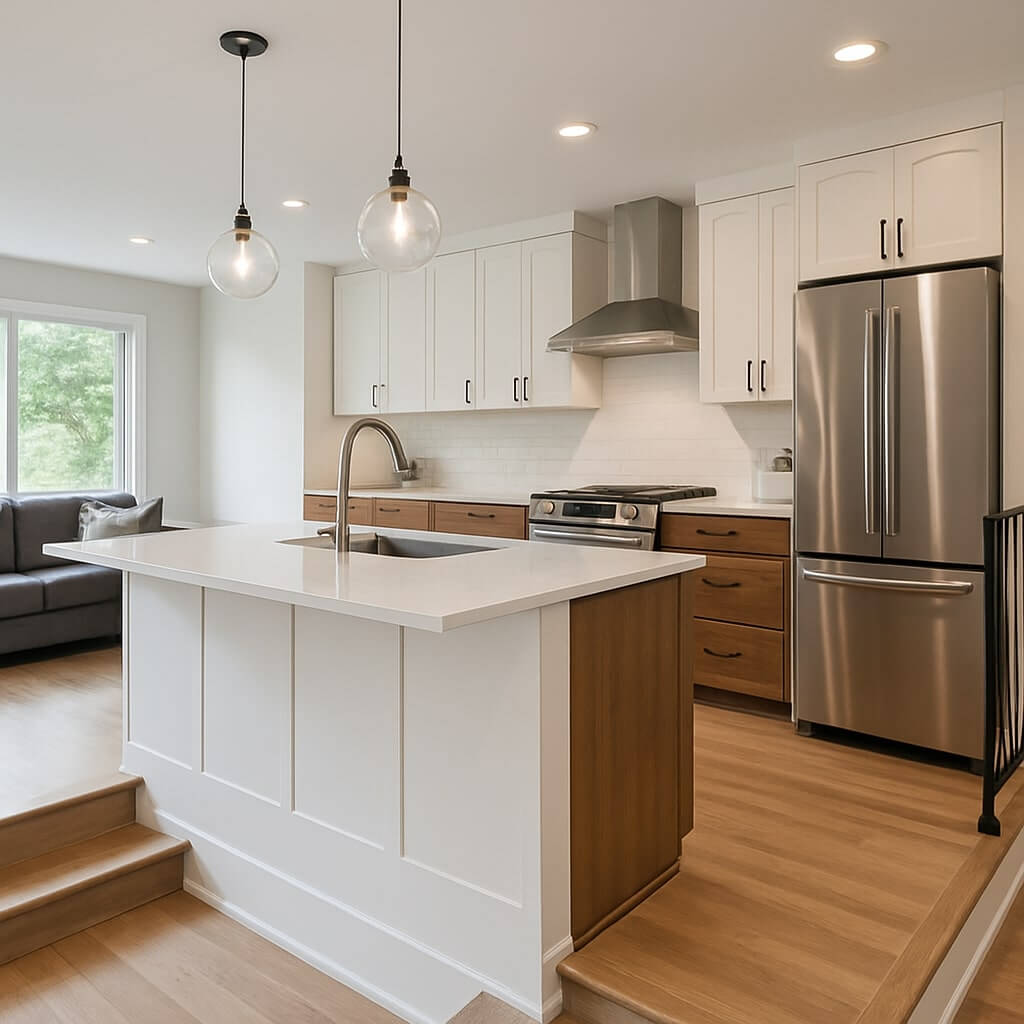Undergoing a kitchen remodel can be an exciting time — new appliances, beautiful countertops, and a fresh new look. However, during the renovation period, your kitchen will likely be out of commission for several weeks. To keep your household running smoothly and avoid the expense of constant takeout, setting up a functional temporary kitchen is key. In this guide, we’ll walk you through everything you need to know to create an efficient temporary kitchen during your remodel.
Why You Need a Temporary Kitchen
A kitchen remodel often takes anywhere from 6 to 12 weeks. Without a temporary kitchen, you may struggle with basic meal prep and find yourself overspending on restaurants. A temporary setup allows you to:
- Maintain a sense of normalcy
- Prepare healthy, cost-effective meals
- Reduce stress for your family
- Minimize disruptions to your daily routine
With a bit of planning, you can create a temporary kitchen that works for your space, budget, and lifestyle.
Step-by-Step Guide to Setting Up a Temporary Kitchen
1. Choose the Right Location
Select a space in your home that can accommodate your temporary kitchen setup. Ideal options include:
- Dining room
- Laundry room
- Garage
- Basement
- A corner of the living room
Make sure the area has nearby electrical outlets and good ventilation.
2. Essential Appliances to Include
While you won’t need a full suite of appliances, having a few key tools will make meal prep manageable:
- Microwave
- Toaster oven or countertop convection oven
- Slow cooker, Instant Pot, or rice cooker
- Electric kettle
- Portable induction cooktop or hot plate
- Mini fridge or second refrigerator (if available)
3. Set Up a Cleaning Station
Without access to your main kitchen sink, you’ll need a place to wash dishes:
- Utilize a bathroom sink, laundry sink, or large utility tub
- Keep a dish rack or mat nearby for drying
- Stock up on paper towels and eco-friendly disposable plates and cutlery if needed
4. Organize Your Food and Supplies
Pack and label your pantry staples in clear plastic bins for easy access. Include:
- Dry goods (pasta, rice, cereal, canned goods)
- Cooking oils and spices
- Utensils, knives, and cutting boards
- Mixing bowls and basic cookware
Keep these items on a folding table, shelf, or portable kitchen cart to stay organized.
5. Meal Planning Made Simple
Stick to recipes that require minimal cooking and cleanup. Consider:
- One-pot meals
- Sheet pan dinners
- Pre-made salads and sandwiches
- Grilled foods (if you have an outdoor grill available)
Planning your meals ahead of time will help you stay organized and reduce stress.
6. Safety First
During a remodel, your home may have exposed wiring, dust, and construction materials. To keep your temporary kitchen safe:
- Keep the area clean and clutter-free
- Don’t overload electrical outlets
- Keep appliances away from water sources
- Always unplug appliances when not in use
Additional Tips for a Smooth Transition
- Communicate with your contractor about when utilities will be disconnected and reconnected.
- Involve the whole family — assign tasks so everyone can help maintain the temporary kitchen.
- Set realistic expectations: cooking during a remodel won’t be perfect, but a little preparation goes a long way.
Frequently Asked Questions
Most kitchen remodels take between 6 to 12 weeks, though the timeline depends on the project scope and contractor availability. Plan your temporary kitchen to last for at least this duration.
Skip recipes with long cooking times or those that produce a lot of smoke or grease, as ventilation may be limited. Frying, for example, is best avoided.
If you include a toaster oven or countertop convection oven in your temporary setup, you can bake smaller items. Large baking projects may need to wait until your new kitchen is ready.
For long remodels, renting a mini fridge or induction cooktop may be worthwhile if you don’t already own them. Weigh the cost versus convenience.
Use disposable plates and utensils when practical. Focus on one-pot or one-pan meals. Set up a dedicated dishwashing station to avoid kitchen congestion.
Conclusion
A kitchen remodel can temporarily disrupt your household routine, but with a little preparation, you can set up a temporary kitchen that keeps life running smoothly. By choosing the right space, including essential appliances, staying organized, and prioritizing simple meal prep, your family can enjoy home-cooked meals throughout the renovation period. With these tips, your transition will be seamless — and you’ll be ready to enjoy your brand-new kitchen once the project is complete.




